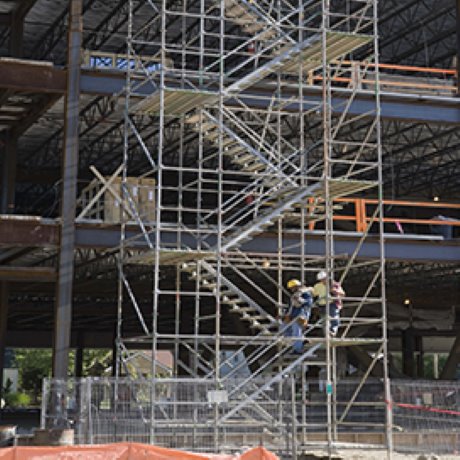The investigation into the death of two masons who fell five storeys at a condominium under construction in Toronto will focus on a piece of equipment known as a mast climbing work platform (MCWP).
"I think in an issue like this the investigation is going to take some time both from the Ministry of Labour (MOL) perspective and the workplace parties," said Jim Wilkinson of independent engineering consultant Wilkinson Technical Services Inc.
"And, it is certainly going to take some time to determine the root cause. Then we will address whatever needs to be addressed to make sure going forward that this type of accident doesn’t happen again."
Two masons were using a mast climbing work platform on March 27 at condominium project in Toronto when it collapsed. The masons fell about five storeys, with one worker pronounced dead at the scene and the other worker transported to hospital where he later succumbed to injuries.
The constructor of the project is Daniels Oakmount Corporation and the employer of the workers is Venice Masonry Contractors Limited. Klimer Platforms provided the mast climbing work platform.
Wilkinson is associated with one of the companies involved in the incident. He is an independent consultant and chair of the Canadian Standards Association (CSA) Standards Committee for mast climbing platforms.
"The products (MCWP) are pretty common in the construction industry right now," said Wilkinson.
"Essentially, they replace or are an alternative to a fixed traditional scaffold and a suspended scaffold. They are very common now for the masonry sector, because they have a much higher load capacity than traditional swing stages and suspended scaffolds."
According to Wilkinson, MCWPs operate by running up and down a mast, which is attached to the building. He said the unit that operates the platform up and down the mast is called a rack and pinion drive mechanism. It is powered by electric or gasoline motors
Heavy loads of up to 10,000-pounds can be lifted on a single platform, which allows workers and materials to be delivered to the façade of a building at the touch of a button.
Wilkinson can’t comment on the current investigation site at 1830 Bloor St.W. However, he can provide specific information about problems relating to the use of MCWPs in general.
"First of all there is proper installation. The mast must be put up, tied to the building and inspected properly," he said. "The installation also has to be done according to manufacturer’s specifications. A lot of applications require specific engineering drawings, in other words the application is designed by an engineer.
In addition, Wilkinson said there is the issue of training for the operators in terms of proper operation, maintenance, use and loading.
These are the kind of issues that are addressed in the operations manual, as well as the new standards for the MCWPs that are being developed by the CSA.
The first edition of the standards developed in Canada for mast climbing work platforms is CSA B354.5.
The purpose of this standard is to provide design, manufacturing, remanufacturing, rebuilding, reconditioning, testing, performance, inspection, training, maintenance, and safe operation criteria.
"The standard was developed in conjunction with and is harmonized with the International Standards and the American Standards," said Wilkinson. "We basically did it with a committee that involved Europe and the U.S. It is a very comprehensive standard, which covers design, installation and safe use."
Wilkinson said a new standard is being developed which will be published some time toward the end of next year.
"The new standard is basically updating or enhancing it with some minor changes," he said. "And it is a little more comprehensive on the safe use side, such as proper techniques and the competency of operators. It provides more details on training for both installation, dismantling and operation."



Recent Comments
comments for this post are closed